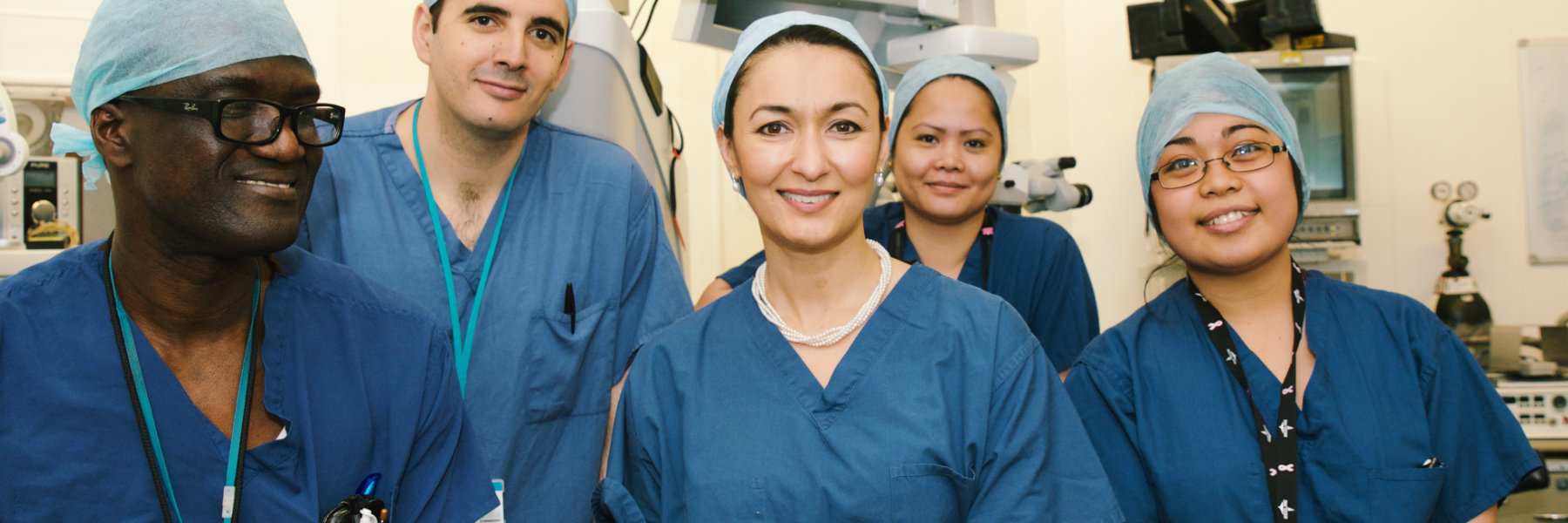Why do I need Laser Treatment?
Retinal Laser is used for three main conditions
To treat a retinal tear, to reduce the risk of a retinal detachment
To manage or reduce the risk of abnormal new blood vessels
To reduce macular oedema, or fluid leakage in the macula, the centre part of the retina.
Laser Treatment to the Retina for abnormal blood vessel growth (neovascularisation)
Retinal laser treatment may be advised if you have had a vitreous haemorrhage (bleed in the eye) or if I see abnormal new blood vessels, which are a sign of poor circulation in the retina . I may also advise retinal laser if you have had a vein occlusion and a fluorescein angiogram has shown that there are significant areas of the retina that have very poor circulation and are ‘ischaemic’. Ischaemia is a condition where the tissue, in this case the retina, is starved of oxygen, and as a reaction to this, the retina releases a chemical called VEGF, Vascular Endothelial Growth Factor, which stimulates new blood vessel growth to make up for the poor oxygen level. Unfortunately, these abnormal blood vessels are just that – abnormal, and they do not provide more oxygen. Moreover, they are fragile, and instead of growing flat int the retinal tissue, the grow forward into the vitreous gel.
As long as the vitreous gel is firm and says in tis place next to the retina, the abnormal blood vessels won’t cause any problems. When, over time, the vitreous gel liquefies it collapses, pulls away from the retina, and pulls in the fragile blood vessels that have grown in to it. These blood vessels then bleed. you may have noticed a few new red or black strands or dots, with slight blurring of vision, or you ay have had a significant and dramatic loss of vision.
If you have already had laser treatment to the retina further laser treatment may still be advised.
The laser heats up and deliberately destroys some of the peripheral retina and this is thought to reduce the oxygen demands of the retina. This in turn reduces the drive for the new abnormal blood vessels to grow. This can even cause existing abnormal blood vessels to shrink. Laser treatment can affect the peripheral vision and this may be considered to be a necessary consequence of efforts to try to protect the central sight.
What are the risks of laser treatment to the retina for new vessels?
Laser treatment can occasionally affect the central sight if fluid gathers in the central retina. This may spontaneously improve but in some cases central sight is affected longterm. Another rare consequence is scarring in the central retina which can cause reduced sight or distortion. This may lead to reduced central sight longterm. However the risks of treatment must be weighed against the potential benefits. Laser treatment in patients with high risk features related to diabetes reduces the risk of severe visual loss in that eye from around 30% to around 15% in the 2 years after treatment
Laser can result in reduced peripheral field (or side vision) and reduced night vision. Sometimes this can stop patients driving because the DVLA standards require patients to have a certain amount of peripheral field.
Do I have to have Laser treatment?

Anaesthesia for Laser treatment
Most laser treatment are done in the outpatient clinic with just local anaesthetic using numbing drops with you sitting up at the laser machine (you will be awake during the treatment).
Some patients are not good candidates for outpatient laser treatment – either they are unable to sit still for the required time, or they are very nervous or simply have a fear of being awake whilst they have an eye procedure. Rarely, the laser cause more discomfort than they may be able to tolerate. In such situations I can arrange for the treatment to be done under local anaesthetic with an injection to numb the eye, or general anaesthesia as long as your general health can tolerate it – the decision is one that we make with the anaesthetist looking after you to make sure you are safe at all times. I also have the option of offering light sedation with a local anaesthetic injection instead of full general anaesthesia. Laser treatment with anaesthesia requires admission to a hospital operating theatre as a daycase procedure.
How long do I have to stay in hospital for Laser treatment?
Laser treatment is usually done as an outpatient procedure under local anaesthesia with numbing drops alone. This means that you will be in the outpatient clinic for 1-2 hours, and go home the same day. If you have required a hospital admission for laser treatment under local anaesthesia, sedation or general anaesthesia, you can also go home the same day. If you haven’t recovered fully from general anaesthesia you may need to stay in overnight, though this is a rare occurrence.